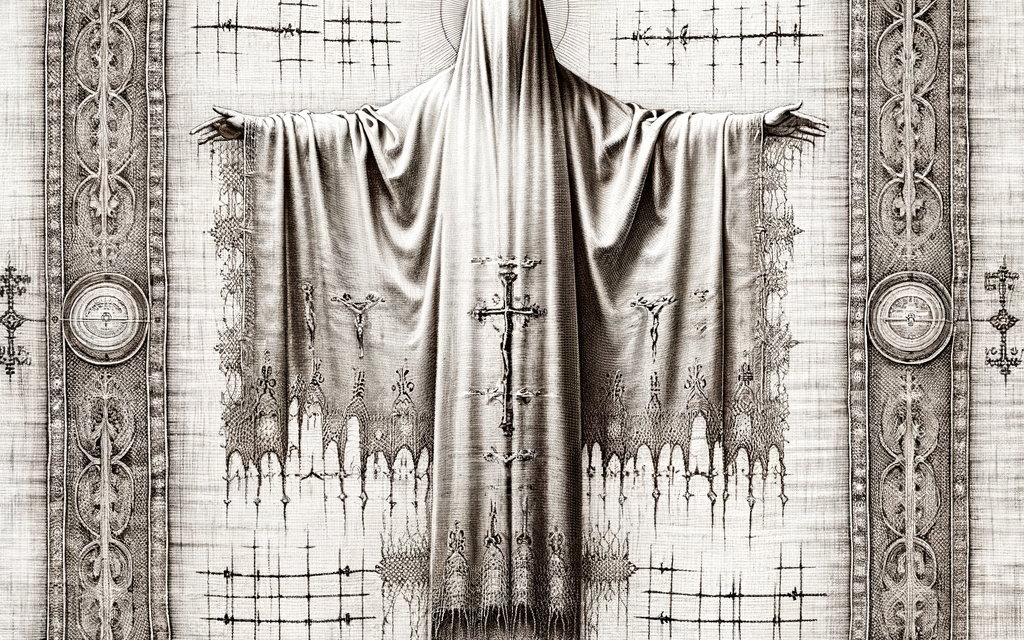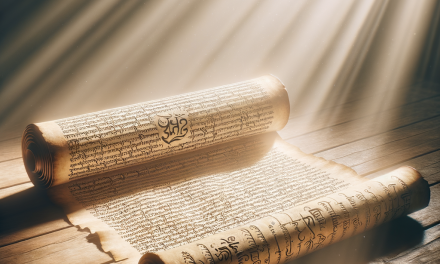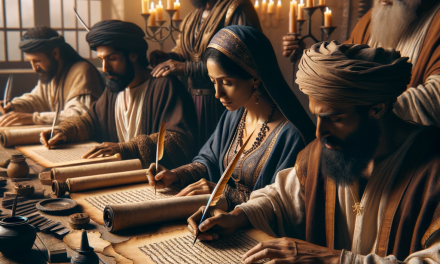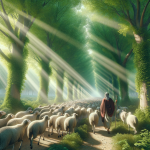Unveiling the Shroud of Turin
History of the Shroud of Turin
The Shroud of Turin, an ancient linen cloth bearing the image of a man, has been a source of mystique and controversy for centuries. Historical records first mention it in the early 1350s in the small French village of Lirey. The relic was displayed by a French knight named Geoffrey de Charny, who claimed it was the actual burial shroud of Jesus Christ. This claim ignited immediate debate, with some supporting the knight’s assertion while others, including local bishops, questioned its authenticity. As the relic traveled across Europe, captivating the curiosity of the faithful and the skeptical alike, more questions arose than answers.
By 1578, the Shroud made its way to Turin, Italy, where it remains today. The history of this enigmatic piece of cloth did not end with its relocation. Through fires, wars, and even scientific scrutiny that involved carbon dating, the Shroud weathered it all. The tests in 1988, conducted by three independent laboratories, dated the cloth to the medieval period, suggesting it was a clever forgery. Yet, many still believe in its authenticity, pointing to its intricate details as inexplicable by medieval techniques. This period of skepticism draws a parallel to John 1:50, “Jesus answered him, ‘Do you believe because I told you that I saw you under the fig tree? You will see greater things than these.'”
The 21st century has seen further investigations, employing advanced technology and fresh perspectives. Though carbon dating has remained a thick cloud over its authenticity, studies of the cloth’s pollen samples and blood stains continue to fuel the debate. Remarkably, the Shroud has transcended historical confines, evolving into a symbol that questions and possibly merges the realms of faith and science. As Luke 12:2 echoes, “There is nothing concealed that will not be disclosed, or hidden that will not be made known.” The Shroud of Turin invites all to peer into the shrouded past and search for the truth behind this ancient relic.
Faith and the Shroud
For devotees, the Shroud of Turin is more than an ancient artifact; it symbolizes an unwavering faith in the divine mysteries of Christianity. Countless pilgrims have journeyed to Turin, driven by the profound belief that the linen holds the imprint of Jesus Christ himself. In this sacred intersection of faith and history, the Shroud becomes a tactile manifestation of biblical narratives and Christ’s ultimate sacrifice. It stands as a reminder, much like 2 Corinthians 5:7 states, “For we walk by faith, not by sight.” The mere contemplation of the Shroud strengthens belief in the unseen and the unknowable.
Despite its controversial nature, the Shroud has deeply woven itself into the fabric of Christian identity. For believers, touching or even gazing upon the Shroud can evoke a spiritual connection, an intimate moment that transcends centuries. Such experiences are often seen through the lens of Romans 1:17, “For in it the righteousness of God is revealed from faith for faith, as it is written, ‘The righteous shall live by faith.’” The Shroud, cloaked in mystery, offers a tangible bridge between the mortal world and divine providence.
Yet, faith is not without its challenges. Skeptics continue to question the authenticity of the Shroud, urging believers to rely on reason and evidence. However, for many, this skepticism only solidifies their faith. The debates and arguments become an arena where faith is tested and often emerges stronger, aligning with Hebrews 11:1, “Now faith is the assurance of things hoped for, the conviction of things not seen.” Through both reverence and doubt, the Shroud of Turin stands as a symbol of enduring faith, encouraging believers to hold firm to their convictions amidst uncertainty.
The Enigma of the Shroud
Wrapped in layers of mystique and unanswered questions, the Shroud of Turin is a perpetual enigma. Modern science has made great strides, yet certain aspects of the Shroud continue to baffle experts. The image on the cloth, characterized by its anatomical precision and inexplicable depth, defies easy explanation. Some theorize that the image was created by a burst of radiant energy, while others consider it an extraordinary work of art. This ongoing puzzle brings to mind Proverbs 25:2, “It is the glory of God to conceal things, but the glory of kings is to search things out.” The quest to unravel the mystery of the Shroud mirrors humanity’s relentless pursuit of knowledge and understanding.
In addition to its scientific conundrums, the Shroud holds profound theological implications. If indeed it is the burial garment of Jesus Christ, then it offers unprecedented insight into the crucifixion and resurrection. This hypothesis aligns closely with John 20:6-7, “Then Simon Peter came, following him, and went into the tomb. He saw the linen cloths lying there, and the face cloth, which had been on Jesus’ head, not lying with the linen cloths but folded up in a place by itself.” This passage encourages believers to look beyond the surface and delve deeper into the spiritual significance of the Shroud.
The enigmatic nature of the Shroud invites endless contemplation. It challenges both the faithful and the skeptic to rethink their understanding of history, science, and spirituality. Whether viewed as a divine relic or a medieval masterpiece, the Shroud of Turin fascinates and captivates, much like Mark 4:22, “For nothing is hidden except to be made manifest; nor is anything secret except to come to light.” The Shroud remains an invitation to explore the intertwined realms of faith and reason, urging humanity to keep questioning and seeking truths that lie just beyond the veil.
As you ponder the Shroud of Turin, consider the myriad ways it bridges the ancient and the modern, the sacred and the scientific. It stands not merely as an artifact but as a testament to the enduring quest for understanding and the depths of faith. Dare to ask questions and seek answers, for in the pursuit lies the essence of our humanity, touching the fringes of the divine. Reflect on your own journey, and let the Shroud inspire you to look beyond the visible, embracing the mysteries that continue to unfold in the ever-present dance between history and faith.











